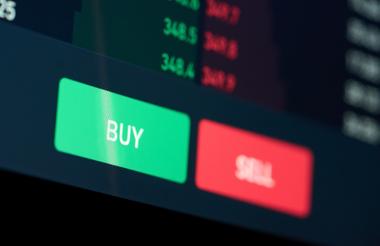“Why do we have cycles?...If the stock market was a machine, it might be reasonable to expect consistent performance.” Howard Marks, co-founder of Oaktree Capital Management
When Covid-19 first struck in early 2020, the US S&P 500 equity index fell over 30% from its February high in a matter of months before bouncing back up to pre-Covid levels by August that year. Moving forward to the end of 2021, mega-cap tech valuations spiked to extraordinary levels, with the NASDAQ up 26.6% for the year, before entering a downward spiral in 2022 after Russia’s invasion of Ukraine. How do we explain such fluctuations when the underlying story of many of these companies has not changed materially? Howard Marks posits this answer: excesses and corrections. Stock markets abound in behavioural traps for the unwary, influencing investors’ decision-making psychology, led by greed, fear and vanity.
A rising market probes for greed in the investor’s make-up. When it finds greed, it plays on it, tempting the investor towards a higher-risk strategy with the promise of higher returns. The higher the market rises, the greater the temptation investors face to increase their level of risk, abandoning the principles that have governed their investment policy in the past. Yet, the higher the market goes, the lower the incremental return is likely to be, leading to greater chances of a setback.
A falling market probes for fear in the investor’s make-up. It tempts the investor towards a lower risk strategy with the threat of further price falls. The lower the market goes, the greater the temptation investors face to reduce their level of risk, abandoning their fundamental belief in stock market investment. Yet history shows that the lower the market falls, the greater the future returns.
The circle is complete when an investor is lured into buying at the top and terrorised into selling at the bottom. The trap is obvious in principle – and absurdly clear in retrospect – but it rarely repeats itself in the same way. It is invariably camouflaged with good reasons for the investor to believe that it will be different this time round. One only has to think of the extraordinary boom and bust in technology shares at the turn of the millennium. This turned out to be a classic stock market bubble masquerading as a new paradigm.
Vanity, hubris and chaos
When not inciting fear or greed, the market probes instead for vanity. At the level of asset allocation, the market invites investors to interpret the trend of political events and anticipate the cycles of economic growth, currencies and inflation to choose between the major investment markets of the world. At the level of stock selection, the market invites investors to form a view of broad industrial trends around the world and assess the strengths and weaknesses of tens of thousands of companies at home and abroad.
In short, it plays to the vanity of sitting in judgement on others. Tom Wolfe satirised the Wall Street investment bankers in Bonfire of the Vanities as “masters of the universe”’ for good reason. In investment, it is often quickly apparent if a judgement has been right or wrong. Even if the underlying judgement is correct, the timing may still be wrong. Share prices move by the moment and investment performance is calculated quarterly. Every 13 weeks, the outcomes of all these decisions are tested to a decimal place. Having encouraged their vanity, the market is brutal in confronting investors with the fact that they are often wrong, tempting them into abandoning the application of principles in their investment policy.
Once detached from fundamental beliefs about the right way to approach investment, investors are likely to fall back on opportunistic trading, setting themselves up to be doubly exposed to the distorting influences of greed and fear.
Keeping behavioural biases in check
Greed, fear and vanity are elemental weaknesses. How should investors proceed, knowing that both they and their investment managers are prey to these powerful forces? Experience suggests that a good starting point is to have realistic expectations about what can be achieved by stock market investment. The next step is to appoint an investment manager whose methodology is persuasive and whose philosophy the investor can share in both good times and bad. Finally, it is important to allow the manager to apply this methodology over a period of five to seven years without seeking to influence policy, unless the investment objectives change. At the end of this period, the results should speak for themselves.
Unfortunately, it is not as simple as this. No single approach to investment is right all the time, so there are bound to be periods of underperformance. Investment managers want to keep their clients when performance passes through a difficult period so, in weaker moments, there may be a temptation to change course and adopt an approach that seems more in keeping with market fashions. However, the disciplined application of clear principles, based on deeply held convictions, is the key to resisting the play of the markets on the emotions and breaking the distorting cycle of greed and fear. Therefore, investors need to take care in setting the tone of their relationship with their manager at such times if they are not to contribute to an amplification of the problem.
Provided their confidence in their manager’s methodology is intact, the best contribution that investors can make during a period of underperformance is to buttress their manager’s determination to persevere. This means retesting the arguments on which the methodology rests and exploring the manager’s investment process. If the manager can demonstrate reasonable grounds for thinking that the process remains sound and ought to produce satisfactory results in due course, there need not be criticism.
How to manage your manager
There may also be times when weak performance is the result of the manager falling prey to fear, greed or vanity. A manager’s methodology may have become more aggressive the further a bull market has risen or uncharacteristically cautious the further a bear market has fallen. A run of success may encourage vanity and lead to an insufficiently self-critical investment process, resulting in the taking of bigger risks. Knowledgeable investors will be watching for such signs as they probe the manager’s investment process.
In short, the best way for investors to protect themselves against the potentially damaging emotions which stock market investment can unleash is to remain diligent in the way they manage their relationship with their investment manager. If the relationship is a partnership, combining obligation with tolerance and goodwill on both sides, the manager should have the confidence to stick to their knitting and resist the market’s assault on their emotions. The savage bear markets of 2000-2003, 2007-2009 and the Covid-inspired collapse and recovery in 2020, together with the current economic concerns, are salutary reminders of the risks inherent in investment.
Loaded for bear
A pertinent question for charities in today’s markets – and indeed for all long-term investors – is what steps can we take to weather bear markets when they occur? There are two sorts of bear markets. The most common is the short, sharp variety, while the other is the slow, lingering type. Bear markets are invariably rooted in deteriorating economic conditions, which are magnified dramatically by investors revising down their valuations of financial assets in the worsened environment.
In practice, bear markets begin when least expected. They often follow a euphoric bull market, in which many new investors have been sucked into the belief that the risk of investing is much lower than it really is. They are usually well under way by the time most commentators are willing to accept that the bull market is really over.
Once a bear market is an established fact, the world looks very different: investors question whether the stock market is really an appropriate medium of investment at all. It is scarcely necessary to say that this sense of shock is not to be underestimated – bear markets shatter investor confidence in ways scarcely imaginable at the peak of a bull market.
Win by not losing it
Greed is one thing, fear is quite another. The long-term evidence in favour of equity investment counts for a great deal less if you are a trustee who has just suffered a 25% fall in the value of your charity’s equity portfolio, possibly in just a couple of weeks, and there seems little prospect of recovery in the foreseeable future.
All this is instantly recognisable from the experience of recent years and there is every chance that future bear markets will be equally savage. Despite the rapid recoveries witnessed in 2009 and 2020, investors should not expect central banks to ride to the rescue after every collapse in confidence and asset values.
Far better is to ensure that an investor’s mindset and their portfolio are well-prepared ahead of time to cope with bear markets – whether short and sharp or slow and lingering – that will inevitably occur from time to time.
Richard Maitland is partner and head of charities at Sarasin & Partners
Charity Finance wishes to thank Sarasin for its support with this article











